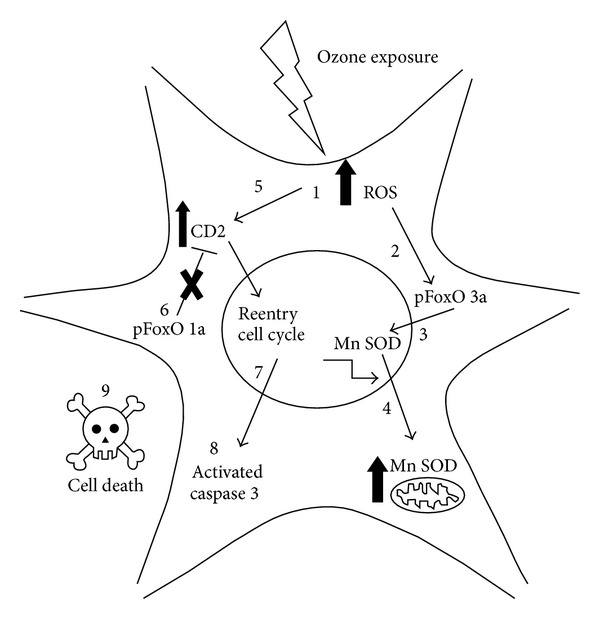Figure 6.

(1) We have shown previously that exposure to low doses of ozone increases the amount of reactive oxygen species (ROS) in neurons. (2) Our results demonstrate that an increase in ROS promotes FoxO 3a phosphorylation and its translocation to nucleus. (3) Once translocated, FoxO 3a increases the transcription of Mn SOD. (4) Mn SOD levels increase in the mitochondria. (5) We suggest that ROS damage increases the expression of cyclin D2. (6) Under redox balance, FoxO 1a is able to block cyclin D2; however, oxidative stress could inhibit the activity of FoxO 1a. (7) Thus, increased cyclin D2 promotes cell cycle reentry. (8) Because mature neurons cannot divide, cell death pathways are activated, including the activation of caspase 3. (9) Catastrophic apoptosis could be induced.
